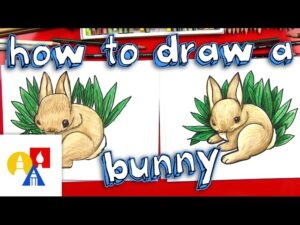Music Games for the Study hall or homeroom
Music Games for the Homeroom
Music games are an extraordinary technique for helping messes with overcoming their shyness and to connect with other children. They are in like manner heaps of silliness, give youths some movement, and add a stimulating to a by and large ordinary school day.
If you are looking for music games for the review lobby, look no further. This article will share 20 extraordinary children’s music games. This integrates a couple of show-stoppers like “Pass the group” and a couple of silliness new games like “Hear it! Cheer! Form it!”.
Why incorporate music games for the review lobby?
Music expects a crucial part in a youngster’s development. Researchers have found that even unborn can see the vibrations of melodic sounds. Infants moreover have a brief relationship with music as displayed by their reverence for cradle songs and fervor to move along to music.
As children become more seasoned, they begin to fall head over heels for the music in young people’s undertakings like Peppa Pig, Teletubbies, Postal carrier Pat, Thomas and Sidekicks, and The Wriggles. They quickly recollect the tunes and stanzas of the various songs they hear.
Music helps adolescents with learning new things. Most children will sort out some way to count, how to say the letter set, and how to express unambiguous words with the help of music. Some of the many advantages of incorporating music into the review lobby, include:
Music helps children’s capability and social capacities
Exactly when a youngster learns one more tune and begins to sing it with various young people, they will deal with their schooling and cultivate a more unmistakable perception of the meaning of unequivocal words. Music will similarly help them with additional fostering their social capacities by helping them with articulating new words and encourage better commonality of talk.
Music games can help a youth with developing really
Various music games incorporate children praising along or playing percussive instruments. These games will help the children with additional fostering their coordination capacities and encourage a sensation of timing. Their planned developments will improve and they will sort out how much horseplay playing an instrument can be.
Music games give young people confidence and intelligent capacities
Young people can procure a lot of confidence by really participating in melodic games. They find that they can sing and turn out to be certain about using their voice to talk with others. Music games can similarly overhaul the intelligent capacities of children and urge them to partake in pack events.
Music further creates wisdom
Experts have found that waiting patiently, standing by listening to music can change how the frontal cortex capabilities. It can decidedly additionally foster obsession, memory, abilities to think, spatial understanding and other intellectual abilities.
The best music games for the homeroom
Here are the very best music games for the homeroom. We’ll start with several music games for additional energetic children then move onto music games for youngsters.
#1 – Little Maestros
This charming music game is obviously appropriate for homeroom conditions and is a mind blowing strategy for familiarizing little children with examining or creating printed music.
Your expectation
Bits of paper
Pencils or pens
Guidelines to play Little Maestros
Start by doling out a couple of pictures for the different sounds that the youths can make using their bodies. You could give out different pictures for hailing, whistling, tapping the table, venturing, slapping themselves on the thighs, hollering a word, and so on. The pictures ought to be things they can form quickly, like lines, circles, waves, and triangles. Apportion something like 4 pictures to different sounds.
Then, at that point, tell the best way to record an essential musicality that you have made up. At the point when the children sort out the thought, make a couple out of extra models on the white board and have the youths “read” the melodic rhythms. Encourage the children to form their own clever rhythms and have the class perform them.
#2 – Freeze Dance
The way that children love to play makes this a very fun game. The rules are fundamental which makes it ideal for little children in kindergarten. It can help with chipping away at the children’s understanding, composed developments, and intuitive capacities.
Your expectation
A music to move to
Bit by bit guidelines to play freeze dance
Tell the adolescents they should move while the music is playing. In any case, when the music stops, they need to freeze in their moving position. The game works best with uptempo tracks. Encourage the kids to look around to take a gander at the engaging addresses that their partners are trapped in.
#3 – Hear it! Commend it! Create it!
This is an inconceivable game for showing little children the basics of making rhythms. Start by showing each young person how the 4/4 timing plan works and figure out what whole notes (semibreves), half notes (minims), quarter notes (crotchets), and eighth notes (shakes) are.
Give each youngster a dry destroy marker and a plastic covered piece of cardboard with 16 squares (four lines of for). Then, praise out a couple of essential rhythms and have the children commend them as well. Ask the young people to then form the beat into the squares. Continuously push toward additional created rhythms.
At the point when the youths have taken in the basics, split them into social affairs and have them acclaim different rhythms to each other.
#4 – Melodic pieces of clothing
This is another game that is habitually played at parties by implies the review lobby well to be sure. It is heaps of silliness and works commendably with additional young students.
Your expectation
A pack of odd dress and additional items (whacky covers, flexible noses, hairpieces)
Seats
A contraption to play music on
Bit by bit guidelines to play melodic articles of clothing
Start by putting together the seats all over. Turn the music on and have the youths hand the bunch of crazy things to one another in a clockwise heading. Right when you press stop, the youngster holding the sack ought to get a thing from the pack and put it on. The youngster with the wackiest outfit when the pack is unfilled is the victor.
#5 – Animal moving
This model game anticipates that children should be creative and helps them with partner with their companions in an extraordinary way.
The best strategy to play animal moving
Play some music for the youths to move to. At the point when they get an indent on, shout the name of an animal or feature a picture of an animal. At the present time, the children ought to start moving like that animal. They can similarly make the clatters that the animal could make in nature.
#6 – Pass the pack
This praiseworthy game is much of the time played at parties anyway can in like manner be used in the homeroom as a strategy for offering the children a respite from school work. It might be changed to make it more entrancing by having children sing or cheer close by the music.
Your expectation
Wrapping paper or paper
Lollies or little toys
The best strategy to play pass the pack
Start by wrapping a couple of lollies or toys in a couple of layers of wrapping paper. Have the children sit all over and play some music. While the music is playing the children will toll in as they perpetually pass the pack in a clockwise bearing.
Exactly when the music is playing, the youngster holding the current will open up one layer of wrapping paper. The youth who opens up the last layer will eat the treat or keep the toy. Assuming that you want to make the game feel even more fair, give each youngster another treat when it is done.
#7 – Play locally built drums
One of the most un-requesting approaches to getting little children making music together is to have them play percussive instruments. You can make this development essentially more clowning around and interesting by making locally built drums with the class.
Use things like metal containers, void yogurt compartments, boxes, and coffee holders. Clean the compartments, then tape or glue some improvement paper to the top to go probably as a drum head. Your locally developed drums can similarly be done with stickers, portrayals, or shimmer to make them seriously appealing.
The young people are then placed into social events to shape a percussive gathering. They will be shown different rhythms and the teacher will use hand movements to tell them when to start or stop playing.
#8 – Melodic hot potato
This is a wonderful melodic game for the review lobby which goes probably as a remarkable ice breaker for youths who might not have even the remotest clue around each other particularly well. This charming development requires a whiteboard. Start by creating 5 requests on a whiteboard. They should be questions which will help the students with concentrating on one another like “What is your fundamental tune?” or “Do you play an instrument?” or “What’s your #1 food?”.
Then, at that point, have the young people sit all over. They will then pass an egg shaker or ball in a clockwise heading while the music is playing. Right when you press stop on the music, the youngster holding the article ought to answer one of the requests on the white board.
#9 – Name that tune
This is a fantastic game for additional laid out young people and teenagers who have started to encourage a nice cognizance of contemporary music. Part the class into 4 or 5 gatherings. In case you would like, let the kids pick their gathering names. Play 1 to 2 seconds of a tune for a gathering and check whether they can calculate the song’s title and the specialist’s name. The piece of the tune you play can be all along or somewhat through the song, depending upon how irksome you want to make the game. In the event that the group surmises the melody title and the craftsman’s name, they will get 3 focuses. In the event that they don’t have any acquaintance with it, you can play one more 2 to 3 seconds of the melody. In the event that they get it right on the subsequent endeavor, they will acquire 2 focuses. The victor of the game is the primary group to arrive at 30 places.
#10 – Pop Tune Pretenses
Pop Tune Pretenses is a significantly more intriguing form of acts that focuses on music. Part the class into two gatherings. Have everybody record three of their #1 pop melodies and the name of the craftsman who sings it on three separate bits of paper. Place the bits of paper into a bowl. Then, each in turn, a part from each group will showcase the melody and check whether their colleagues can get it. The triumphant group is the one that accurately surmised the most melodies.
#11 – Portray what you hear
This action assists understudies with figuring out how to break down the melodies that they hear. It expects them to focus on a synthesis and utilize inventive language to depict what is happening inside the music. This errand can be utilized with offspring, all things considered, yet will in general be more significant while working with youngsters who have some information on fundamental melodic ideas like mood, tone, and tune.
Just play a tune to the class and request that they center around its creation. As the tune plays, permit understudies to approach the white board and compose a solitary word that portrays what they are hearing. Following a couple of moments, you ought to have a great deal of words on the whiteboard.
Presently, work with the class to bunch the words into classifications. Find the words that connect with instrumentation, mood, timing scheme, classification, rhythm, tone, and tune. Examine every angle with the understudies to assist them with looking further into music appreciation.
#12 – Make a “Step” mood schedule
This is a fabulous movement for grade younger students as it assists them with fostering an ability to keep in tempo in an exceptionally fun way. Observe a few recordings of “Step” with the class. They are a melodic gathering that utilizes a mix of regular things and their own bodies to utter percussive sounds.
Part the class into four or five gatherings and relegate each gathering a specific arrangement of percussive instruments. Allow them 15 minutes to foster their own percussive schedules that are propelled by Step and have them play out the daily practice before the class.
#13 – Toxin beat
The game begins with the educator applauding a four-beat musicality that is named the “poison cadence”. They will then applaud a progression of four beat rhythms to the class, which the class should rehash. At the point when the teacher applauds the toxic substance mood, the class ought to stay quiet. In the event that anybody in the class coincidentally applauds the toxic substance beat, they are out of the game. This is a straightforward and fun method for assisting understudies with perceiving various rhythms.
#14 – Form a rap
Melodic piece is a remunerating action that allows kids and teens an opportunity to put themselves out there. Rapping is a fabulous type of melodic piece for youngsters since they needn’t bother with having the option to peruse or compose music to make a drawing in tune.
Begin by showing the youngsters a few instances of the ABBA and AABB rhyming plans frequently utilized in rap. You can likewise share a few points for the kids to expound on. Have them separated into gatherings of 3 or 4 and inspire them to compose a short rap. Every understudy can rap a stanza of the melody. They will have loads of fun while gaining tons of useful knowledge about tune composing and communicating their own imagination.
#15 – Arbitrary rhythms
This straightforward game assists understudy with finding out about composition and applauding rhythms. Every youngster is given a six sided dice. The educator will dole out a cadenced worth to each number of the dice. In this way, a 1 may be a crotchet, a 2 is a melodic rest, a three is a trio, etc. The understudies will then, at that point, toss their dice and spot their irregular mood onto a clear page. Whenever they have finished 16 bars of beat, they can applaud it to the homeroom.
#16 – I Have, Who Has
Toward the beginning of this game, every understudy will get a card that has two rhythms on it — one to recognize (“who has”) and one to rehash (“I have”). The understudies will sit all around and applaud their “who has” cadence. At the point when a youngster hears the beat that they have on the “I have” part of their card, they put their hand up.
#17 – Make a business
This is another game that spotlights melodic organization. Partition the class into gatherings of 3 to 4 understudies. Give each gathering admittance to instruments like electronic consoles, guitars, wind instruments, and percussive instruments. Give them an item that they should compose a jingle for. The group with the best wilderness wins! Your understudies will come up with exceptionally entertaining verses and cliché songs.
#18 – What’s that sound?
This basic game will show understudies the numerous odd brilliant instruments. Begin by playing understudies short clips of different instruments. This ought to incorporate uncommon instruments that the understudies may not experience in their day to day routines, similar to the obo, sitar, theremin, hydrolauphone, and djembe. Then, play a few melodies and ask the class which instruments they perceive in each track. Include some world music tracks which highlight remarkable instruments.
#19 – Music random data
Part the class into groups of 3 to 4 understudies. Request that each group pick an interesting music related name like “E=MC Sledge”, “Quiz Team Aguilera”, or “We should Get Curious”. Each group gets a triangle or chime. Request the class a series of music related questions. These could incorporate specialized questions like “What number of semiquavers can squeeze into a bar of 5/4?” or “What was the name of the Sovereign’s most memorable collection?”. The main group to ring their triangle and effectively respond to the inquiry gets a point. The principal group of 15 focuses wins.
FAQs
1. What are some fun music games for young children?
Simple games like “Musical Chairs” and “Freeze Dance” are great for young kids. They help with rhythm, coordination, and listening skills while being loads of fun.
2. How can music games help with learning?
Music games improve literacy, communication, and cognitive skills. Kids learn new words, improve pronunciation, and develop better memory and concentration through engaging activities.
3. Are there music games suitable for older students?
Absolutely! Games like “Music Charades” and “Rhythmic Relay Races” are perfect for older kids. They challenge students to think creatively and work together, enhancing their musical knowledge and teamwork.
4. What resources do I need to play these games?
Most music games require minimal resources. You can use everyday items like chairs, music tracks, and simple instruments like tambourines or maracas. Many games also use free, downloadable materials.
5. How can I incorporate music games into my lesson plans?
Integrate music games into your lessons by using them as warm-ups, breaks, or even as part of the main activity. They make learning interactive and enjoyable, keeping students engaged and excited about music.














Post Comment